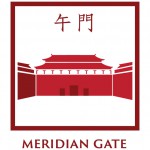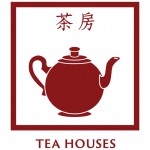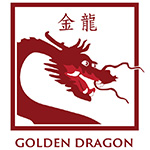Protected by a moat and soaring red walls, the Forbidden City contains one thousand buildings, gardens, and pavilions spread over nearly 200 acres. This imposing complex was once home to 24 emperors from the Ming and Qing dynasties and today welcomes visitors from all over the world as the Palace Museum. VMFA is creating a scale model of the Forbidden City using 3D printers donated by Leapfrog 3D Printers as part of our fall exhibition, Forbidden City: Imperial Treasures from the Palace Museum, Beijing. More than a million workers built the original palace complex 600 years ago, but this 21st-century version will be complete in a matter of weeks!
You can join VMFA in this quest by choosing the architectural icon (below) that matches your level of support. With gifts beginning at just $10, everyone can get involved in this exciting campaign. Show your support for the cultural vibrancy VMFA’s exhibitions bring to Virginia as an individual, a family or a school class.
Your fully tax-deductible gift to the VMFA Exhibition Fund will support the museum’s entire exhibition program—from traveling exhibitions like Forbidden City and Chihuly to those showcasing VMFA’s permanent collections. These projects are essential to VMFA’s educational mission to enrich the lives of all Virginians through the arts. We’ll be proud to recognize your support of this project on our virtual donor wall!
After you’ve made a gift, come to the museum to see the printers at work and watch the Forbidden City model grow day by day in the Cochrane Atrium.
First Crowdfunding Campaign Tied to 3D Model

In the weeks leading up to the exhibition’s opening, VMFA launched its first crowdfunding campaign tied to the 3D printers and model. In just 26 days, the campaign to build the Forbidden City raised $61,225, exceeding the original $40,000 goal by 52%. A generous matching gift from Frank Qiu and Ting Xu of Richmond-based Evergreen Enterprises midway through the campaign was critical to its success. The couple offered a 1:1 match for every gift up to a total of $25,000. We thank all those who embraced the crowdfunding project and encourage others to show their support for VMFA’s Exhibition Program. A full list of crowdfunding contributors appears next to the 3D printers in the Atrium and on the virtual donor wall below.
Please note: VMFA is using Razoo, a third-party online advocacy and fundraising application for this campaign. Razoo’s Terms of Service and Privacy Policy apply to your use of this service. VMFA is unable to answer any inquiries regarding the status of your contribution while it’s being processed by Razoo Foundation.
VMFA would like to thank the following for their generous support
(Click on the area you have helped build to find your name on the list)

The Meridian Gate is the south gate and main entrance to the Forbidden City. Standing 115 feet high, it is the tallest structure in the city and has three large doorways in the center. The central door was generally reserved for the emperor.
Sam and Meredith Allin
David F. Bennett
Thomas Bowen-Rees
Ezekiel Brody
Sarah E. Burgess
Shanna Chandler
Clark E. Crown
Patricia Wagner Dodson
Valerie J. Farrell
Jodie Felice
Jessica L. Ferey
Margaret A. Fohl
Joe Foster
Joyce Garner
Jean F. Goodine
Barbaragae Joffe
Laura Knotty Amp
Linda Kraft
Beverly Lammay
Barbara Hatch Lore
William H. Lovings III
Ramon Mas Maspons
Elizabeth A. McNamara
Kimberly McQuillen
Vicki and Phil Miller
Darcy A. Morrison
Susan Moss
Joseph A. Perdue
Brandon S. Perry
Sheila Preville
Megan K. Reilly
George B. Siecko
Jeffrey A. Spencer
Barbara J. Strong
Bob Tarren
Lauren C. Totty
Lorijean Turner
Brent Turner
Divya Vinjamur
Christopher Walsh
Anonymous (4)

Tea has been an important facet of Chinese culture for more than 2,000 years and played a significant role in palace life. During the first month of the Chinese New Year, Emperor Qianlong would host a tea party in the Palace of Double Splendor.
Marie Aalseth
Pasquale J. Accardo
Amy Anderson
Julie W. Appleby
Anna Armstrong
Marilyn S. Artz
April Barlett
Allen Batchelor
Christine Clarke
Emily C. Bennett
Lauren Bifulco
Sara Boddorf
Regina A. Burnett
Lynn Bradford
Sandy Marks Bricker
Erin J. Brooks
Barbara Ebert
Catherine Burgess
Jess Burgess
Margaret Cahoon
Margaret Cavitt
Leon T. Cella
Mary Cooke
Lorelei Denton
Toy Douglas
Robert B. Engle
Alexina R. Fagan
Deborah S. Fagan
Margaret J. Friedenberg
Angela L. Galante
Deborah L. Galeski
Judith Gaskin
Kathryn H. Geranios
Linda A. Gill
Georgie and Gilbert Green
Susan Haggerty
Jane Hamilton
Karen Harvie
Sterling L. Hawkins
Sarah Honenberger
Olivia Bethany Jones
Indra A. Kancitis
Ann Kramer
Amy R. Krumich
Mary Meade Lee
Signe J. Lefever
Maria C. Martinez
Antonio Masullo
Corinne McVeigh
Sylvia Messina
Camilla Moon
Michael Moore
Todd Munson
Nikki Nicholau
Elizabeth S. Olson
R. S. Reynolds
Joan S. Richards
David Ridderhof
Lucinda Ritter
Beth Rocheleau
Karol Roehr
Katharine W. Rogers
Leslie Rosenbaum
Erin Sheets
Elizabeth Sherer
Teresa P. Shiffer
Theresa A. Singleton
Jane Sper
Elizabeth Staples
Helen D. Stiskal
Susanne S. Stone
David Talton
Mieko Timmons
Patricia P. Van Tuyle
Fontaine J. Velz
Satyaprakash Venkataraman
Carla L. Vipperman
Patricia Wasiuk
Kateland A. Woodcock
Mary Macleod Woodruff
Sidney E.Yates
Frances Zehmer
Anonymous (7)
![]()
Imperial family members and nobles practiced their archery and equestrian skills at the Archery Pavilion and in the Outer Court. Military examinations under Emperor Qianlong also included events in mounted archery and archery on foot as well as lifting weights and swordsmanship.
Cynthia Anchor
The Baldridge Family
Elizabeth Boehringer
Louellen Brumgard
Elizabeth S. Coleman
Dennis L. Cupp
Michael S Dolton
Christopher H. English
Collegiate Lower School Chinese Students
Timothy Fish
Wilson Goh
Suzanne Hall
Trotter and Caroline Garrett Hardy
Sandra A. Hartley
Miya He
Thomas E. Hemstock
Collin H.A. Hoskins
Jillian Jones
Sarah Keeton
Richard and Candace Kuhta
Andrea Lantz
M. W. Marrion
Upton Martin
Yu Mei and Robert Wu
Katie C. Merritt
Neathawk Dubuque and Packett
Anne L. Nere
Caroline Nichols
Paula C. Nolin
Leslie F Parlow
William L. R. Rice
Raleigh F. Romine
John A. Rosecrans
Joan Sprinkle
Yang Tian
Denise B. Tomczak
Thomas W. Zydel
Anonymous (1)
![]()
The Imperial Garden, built in 1417 during the Ming dynasty, is one of many in the Forbidden City. Covering an area of 12,000 square meters on the northern end of the Forbidden City, it was formerly used exclusively by the imperial family.
Royanne C. Bailey
Candice Banks
Paul and Diane Barrett
Anne Battle
Daniel Billard
The Bowen-Rees Family
Terry Chern
Jane H. Ching
Ping Chu
Turner F. Cole
David E. Credicott
Naomi Crown
Paul DiPasquale and Kelly Kennedy DiPasquale
Molly H. Dodge
Mei Dong
Jane Dowrick
Carrie Eddy
Virginia R. Edmunds
Jesse Grapes
Joyce M. Grunewald
Cheryl Guedri
Jesse B. Harris
Nancy L. Harvey
Thomas E. Hemstock
Stephanie L. Holt
Sara P. Hudson
Russell and Anke Jackson
Joan E. Kerby
Lyn and Don Kocen
Mary Kuo
Daniel Laskin
Stephen Louie
Mary and Nelson Melton
Michael and Benita Miller
Jaclyn Miller
Trudy Norfleet
John Ong and R. Phil Floyd
J. Lee Osborne
Carl Patow
Sharon and Edson Pederson
David K. Perdue
Susan C. Russell
Elizabeth S. Hopper
Jayne Shaw
Elizabeth C. Stevenson
Donna and Craig Suro
Doris Thrift
Georga S. Williams
Dr. Tarynn M. Witten
Quentin Yan
Anonymous (1)
![]()
Ming emperors and Qing emperors and their extended families were pious believers of Buddhism and Daoism. The Hall of Imperial Peace is a 15th-century Daoist temple located in the center of the Imperial Garden.
Dorothy Amore
Margaret Georgiadis
H. Hiter Harris III
Miya He and Thomas Hemstock
George Hoover
Claudia Keenan
Eric Lin and Tu Le
Bernie and Jamie McDonald
Kristen E. Neese
Dan Neuwirth
Donna and Wade Thrift
The Hall of Supreme Harmony, the largest building in the Forbidden City, was where the emperor hosted grand ceremonies such as his birthday celebration, his enthronement ceremony, the Winter Solstice and the New Year. Rituals in ancient China were considered dialogues between humans and gods, in which humans made supplications for bountiful harvests, good fortune, and societal peace.
The Armstrong Family
Janet Dibbs
Bob and Sally Mooney
Christine C. Morrison
Brittany and John Toler
Anne and Winfred O. Ward

Deeply rooted in Chinese culture, dragons are revered as benevolent creatures and the ultimate sign of good fortune. Through their ability to control the rains, dragons traditionally ensured successful crops and thriving livestock. Originally a totem of clanship, dragons have long been an emblem of the Chinese people, who consider themselves “descendents of the dragon.” Dragons were also a symbol of the Emperor’s power. Objects created for the Emperor—from a carved seal to an imperial robe and a magnificent throne—were often embellished with dragons. There are believed to be 9,999 dragons in the Forbidden City.
Carneal-Drew Foundation
Ann and Jim Belk
Anne N. Edwards
Alexandria McGrath
Jay Olander
Frank Qiu and Ting Xu
Drew and Julee Spitzer
Deborah and Thomas Valentine
Wilbanks, Smith and Thomas Asset Management